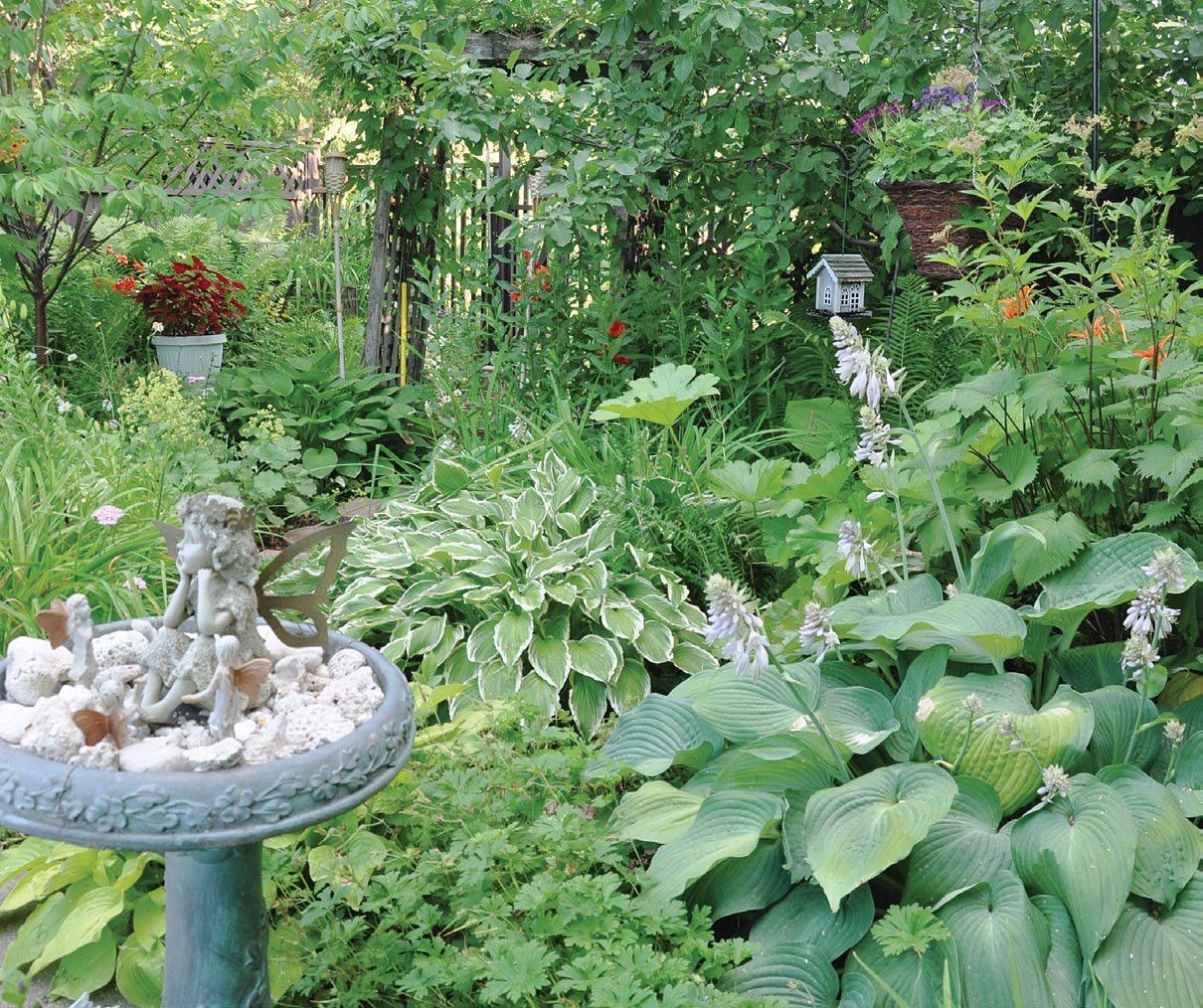
4 minute read
Close to the kitchen
By Shauna Dobbie
When I move to a home with more land (where I can keep chickens and grow apple trees!), I will keep a little kitchen garden right outside the back door for things I need frequently through the summer. The raspberry bushes, asparagus and cauliflower will be further away, in the business part of the garden, not too far from the compost heap. Close to the kitchen, I will have the things I’ll want to step out and grab as I’m making dinner.
Advertisement
Greens for salads will definitely be there. Arugula and spinach and all the lettuces I can manage. These are known as “cut and come again” greens. What you do is cut the outer leaves only, while the plant is growing. The “growing tip” is in the centre, where the new leaves are emerging; cut that and you won’t get any more plant. You can plant greens seeds all spring and again in the fall. These are cool-weather crops; the maximum temperature for lettuce to be happy is 24 Celsius, so I won’t even try in July and August here in Southern Ontario. In areas where you don’t get such hot summers you can try, though.
There will be tomatoes, which can be picked ripe if they get that far without splitting or being nibbled by bugs, birds or squirrels. I’ll pick most when they’re half pink (for red varieties) and ripen them in the house, though. Turns out they ripen with full flavour and nutrition once they reach this point, known as the breaker stage. Picked tomatoes are best kept in a non-sunny spot at room temperature. Keeping them on the windowsill can lead to sun scald.
And cucumbers; they’ll produce for about six weeks, but only if you stay on top of picking the ones that are ready. I can start the season with ‘Green Light’ cucumbers, an AllAmericas Selection winner for 2020, which is mature just 42 days from germination. ‘Aladdin’ takes 65 days, so they’ll be ready when ‘Green Light’ starts to wane.
We’re partial to strawberries in salad, so I’ll have to have some in my kitchen garden. Choosing varieties will be a little tricky with strawberries. There are “everbearing”, which are different from “day-neutral”. The traditional strawberry bears fruit in June or July, depending on where you live. Everbearing gives fruit in the early summer and again late in the summer. Day-neutral flowers and fruits all summer long and into fall, but sometimes day-neutral are called everbearing because, well, they are ever bearing fruit. ‘Albion’ and ‘Seascape’ are a couple of good dayneutral varieties.
Neither my husband nor I are crazy about radishes, but by the time we get our house-with-land, perhaps we can have company for dinner again, so maybe I’ll put in a few. They can go from seed to harvest in just three weeks, but you can’t grow them in the heat of summer. Which is why I’ll interplant carrots along with the radishes. Carrots take time to germinate, so it makes sense to plant them
with an early-harvest vegetable. This is an idea I see all the time in vegetable articles.
I’ll plant a handful of seed potatoes in the kitchen garden for some newpotato goodness. It doesn’t matter what kind I plant because they’re all yummy when harvested early. Potatoes to store I can grow further from the house.
I’ll plant peas because they fix nitrogen in the soil and because they’re delicious in the shell or out, depending on the variety. Also, because you can eat the tendrils and shoots like salad greens. You can pinch off the tops of the plants early (and eat them) in their growth to make them bushier; this will slow down the development of the peas, but it will make more grow. Plus, I can plant twice as many peas as I intend to grow then cull half of them (more pea greens to eat!) when they’re young, thinning them out to give them space. This is another plant limited to early summer, but I may try to grow more in the fall.
Herbs are on my plant list for the kitchen garden. Mint in a pot will fill any shady spots. I’m not crazy enough to plant it directly in the garden after hearing from so many people saying it’s invasive. I’ve planted it in the city before, but my garden has been reworked so frequently mint has never gotten too out of hand here. I’ll have spearmint, of course, but I’ll finally try some of the others, like chocolate mint—which smells like chocolate!— and variegated pineapple mint. I don’t use much mint in cooking, but it is wonderful to rub and smell.
Basil will figure large. The compact basil I’ve been growing here (‘Spicy Globe’ or ‘Fino Verde’) has been fine, but I want the standard, old-fashioned sweet basil or even lettuce leaf basil. This is a herb I do use quite a bit. Whole leaves with fresh tomatoes and bocconcini cheese, or cut chiffonade-style and scattered into pasta with lemon, olive oil and parmesan. Just thinking about it makes me long for summer. It will need to have any flower buds pinched out to keep its flavour, but that won’t be a problem. Also, unlike with the salad greens, you use the new leaves rather than the older ones on the outside of the plant.
Chives is another herb that will grow in my kitchen garden. They are so easy to grow; you just put them in and you’re done. They come back each spring, whether they’ve been trampled or used. They benefit from dividing every few years into clumps with about ten bulbs each. I’ll replant some of these clumps near tomatoes and carrots to repel aphids and Japanese beetles. And maybe I’ll give some to my new neighbours!










